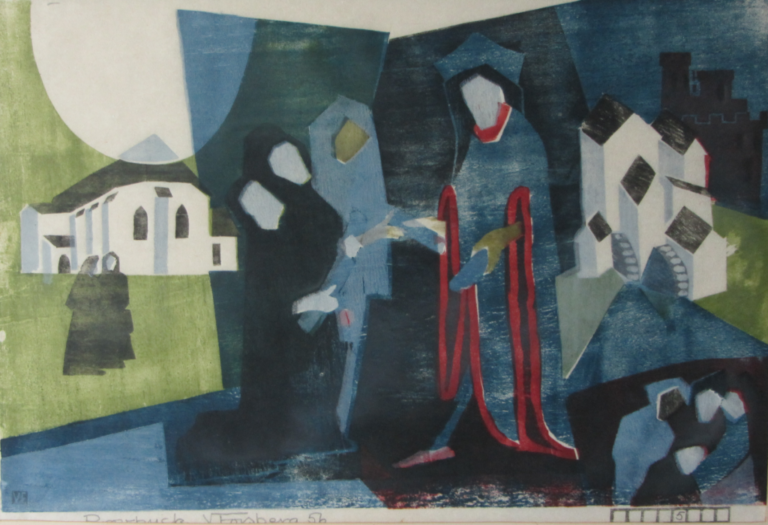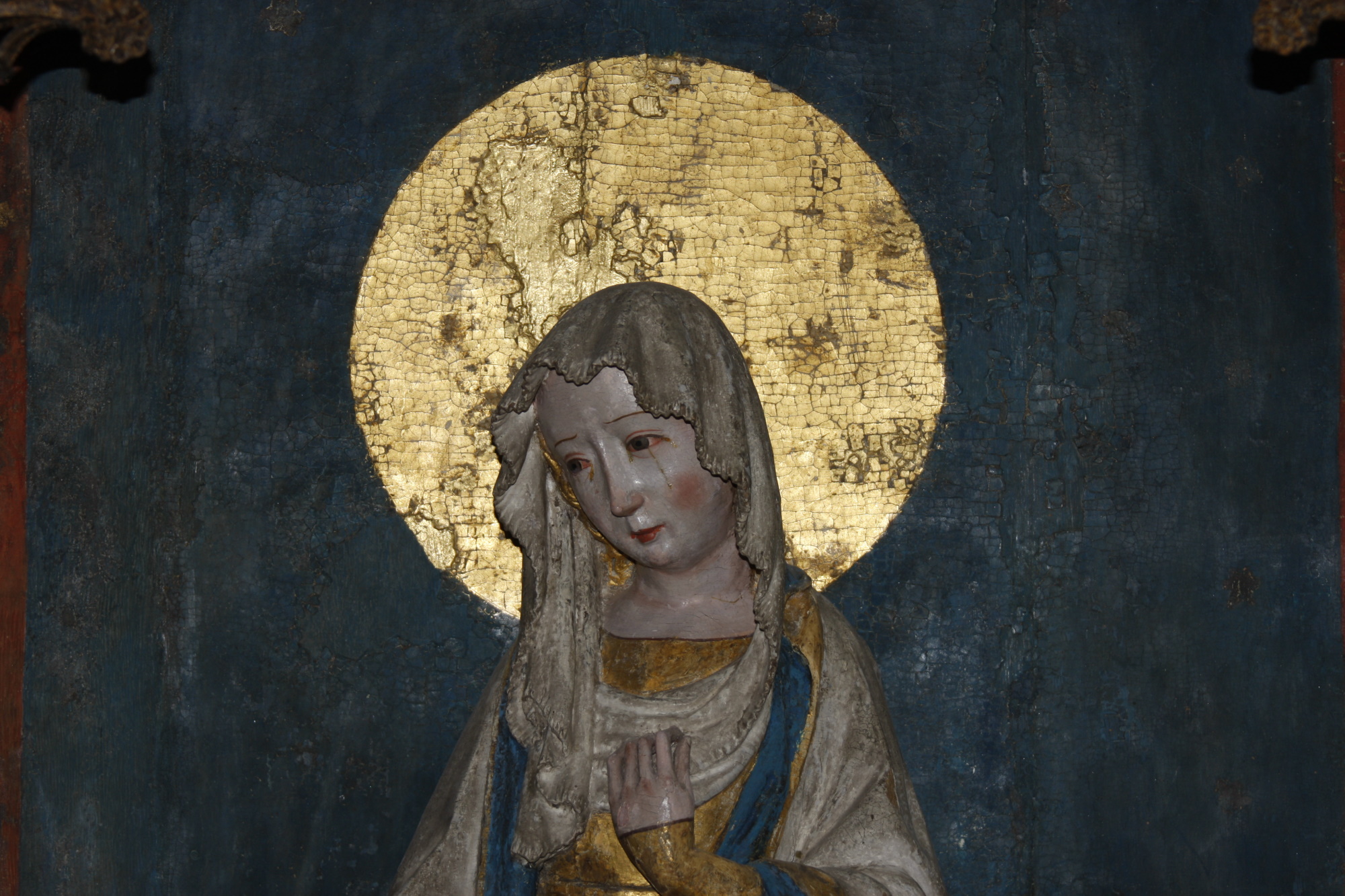The association received a very interesting painting, a gift from Åke and Kerstin Engberg in Norrköping, in memory of Åke’s father Knut Engberg, who was a teacher and cantor in Askeby until 1961.

The name of the artist is Viking Forsberg (1910-1994). After his education at the School of Advertising art and University of Art and Design in Stockholm he serviced as a fireman in Norrköping. He could practice his artistic work alongside the profession as a fire fighter through the disposal of an atelier on the fire station’s attic. When he retired at 55 years of age he started painting full time. His motifs were landscapes, urban environments, portraits, and work processes (e.g. from Rejmyre glassworks). He mostly worked with graphic, especially woodcut, and painting.
Viking Forsberg is represented at the museums in Norrköping and Linköping, and in several county councils. He has painted a mural picture on the wall in Norrköping fire station.
The motif in our painting is one of Viking Forsberg’s regular motifs. Is this a result of his interest in history and sights, his wife, for example, often wanted to visit churches? Or is there any other explanation to why he chose this particular subject? So far, we have not been able to answer this question. For now we have to settle with just looking at the picture.
We see a man in a simple, yet distinguished, clothing of medieval fashion. He is wearing a blue cloak with hanging sleeves braided in red. The man stretches one leg, showing that he wears narrow, pointed shoes of latest fashion. The angular headpiece may be a so called biretta, commonly worn by men of the Catholic Church and other academics. In front of the man stands three women, two are dressed in black and one wears a blue garment. They are receiving convolved sheets. They are probably some sort of diplomas, a medieval letter or a bull, a papal proclamation.
To the left you can see Askeby abbey and two nuns. The garments clearly describes that they are not Cistercian nuns, but probably Benedictines. Perhaps the artist has chosen to depict them as Benedictine nuns in their black garments to demonstrate the motif is taking place before the beginning of the 13th century. It is assumed that this was the time Askeby’s original Benedictine nuns converted to the Cistercian order.
In the right part of the picture we can see a group of white buildings with big standing water wheels, so called wheel mills, by the shore of a rushing stream. Behind them there is a burg-like building. It is not as distinguished as the mills, but rather obscure. That may be interpreted both figuratively and literally. But let us begin with the mills.
Askeby abbey owned both mills and fishing water in Norrköping, in what today is known as the Industrial landscape. In Norrköping City Museum there is a model of how this area may have appeared during the Middle Age. The water course, now called Motala stream, creates a waterfall where the fishing was profitable, mainly salmon and eel. Numerous mills were built by the waterfalls. Carl Mille’s statue of Louis De Geer depicts De Geer’s significance for the growth of industry in Norrköping. There you also see the important mills. They have most likely been the model for the motif of the mill in our painting. Concerning the burg, Viking Forsberg must have created it out of his fantasy, or perhaps inspired by the water tower close to his work, the fire station. There is no real burg in Norrköping, and there has probably never been any. The burg that the artist had in mind is probably the mythical fortification Knäppingsborg, which supposedly was built in the area of Knäppingen by the Old Bridge. It was vital to have it controlled because it made up one of few connections between Östergötland and Sörmland.
Finally, in the lower right corner of the painting there is a group of women with lowered heads in gratitude and humbleness.
What does the painting tell us? As there is no documentation about the painting, the artist’s intentions are just something we are assuming as we see the nuncio from Pope Lucius III (Pope in 1181-1185) hand over a bull to Askeby abbey’s abbess and nuns. The bull contained a message about the pope accepting that the churches of St Olof in Norrköping and in Svinstad (present Bankekind) belonged to the abbey in Askeby “such as annexe for ceaseless tenure.” This meant that the abbess in Askeby had a right to engage a reverend in these churches. Today we cannot see the church names of neither St Olof, nor Svinstad on the board, only the church of Askeby. But there is also written that the abbey possessed fishing right in the stream in Norrköping. The main concern was fishing salmon and eel, but also ide and whitefish.
It is also possible that the portrayed man was one of the other abbey donors, King Karl Sverkersson, who donated several land areas in Norrköping in 1162. In that case it is not a biretta that the man is wearing, but a crown that very much resembles the one King Karl Sverkersson wears on his seal.
With the freedom of an artist, Viking Forsberg has depicted an important landmark in the history of Askeby abbey. Even if we cannot for sure know what event the artist wanted to illustrate, it is still made clear by the motif that there has been a close connection between Askeby abbey and Norrköping, and that this has been divulged by a high personage.
The Association of Askeby abbey is also grateful to Norrköping and some of the residents, and addresses special thanks to Åke and Kerstin Engberg for the much appreciated gift, as well as to the artist’s daughter, Berit Jonsson, and the former museum director, Bo Sylvan, for the valuable information!
